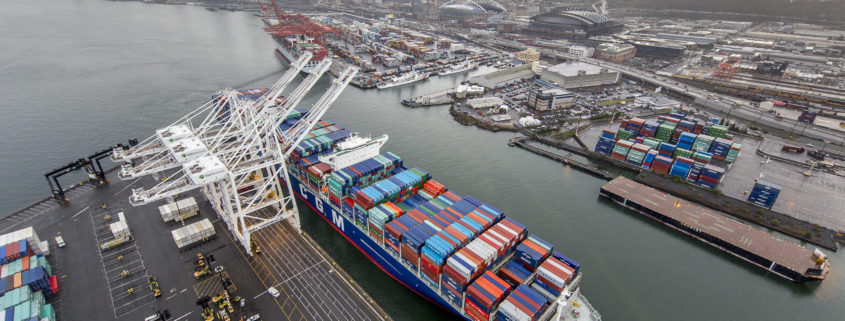Trade war drives drop in ocean and rail intermodal container freight; uncertain prospects for recovery in 2020
Compiled by Bruce Abbe, strategic advisor for trade and transportation
U.S. agriculture isn’t the only industry anxiously awaiting for the “Phase One” U.S.-China trade agreement to start to spur more exports. The global and U.S. transportation industry took a negative hit during 2019, and industry experts are showing scant optimism for a recovery in the near term.
Prominent global container shipping research analytical firm Alphaliner recently reported that total container shipping volumes on the important eastbound Trans Pacific trade lane fell 2.5 percent in 2019. That marked the first time since the 2009 recession that container shipping trade numbers actually dropped. As ag container shippers know, imports of goods in containers determine the availability of containers for backhaul for U.S. exports, which also fell last year.
The six major North American west coast gateway ports also showed a decline last year from 13.7 million to 13.2 million twenty-foot equivalent units (TEU). China’s container shipments to the U.S. dropped nearly 10 percent due to the U.S./China trade war. Exports and imports from the growing South East and other Asian locations helped reduce some of the trade volume loss, but not enough to make up for China. Click here for more coverage from Freightwaves.
Data out late last week from the Intermodal Association of North America (IANA) also documents how 2019 was a down year for U.S. intermodal rail and trucking. According to IANA’s Market Trends & Statistics Report, intermodal volumes were particularly hard hit in the fourth quarter of 2019, down 7.4 percent from 2018, reports Supply Chain Management Review (SCMR).
The report called 2019 a very challenging year for the North American intermodal industry with the yearly volume again dropping the most since 2009. IANA tracks both domestic intermodal and international intermodal container shipping, the critical numbers for ag export shippers. Inland rail shipping (ISO) volumes dropped 9.1 percent in the fourth quarter, IANA said, citing several factors.
“It’s probably too soon to assess the impact of the ‘Phase One’ trade deal,” said Joni Casey, IANA president and CEO, according to SCMR. “However, it does bring some stability to the international sector. The coronavirus, along with the emerging impacts of the IMO 2020 (low sulfur fuel mandate for ocean vessels) bring other elements that could impact the intermodal market.”
For ag exporters, the “Phase One” commitment by China to purchase an additional $40 to $50 billion in imports from the U.S. over two years is heartening news, but details remain scarce. The U.S. cancelled some planned increases of tariffs on Chinese goods, but largely kept the existing tariffs in place so far; with China also keeping its counter tariffs in place, while not charging them on some recent large bulk vessel purchases on a select basis.







Leave a Reply
Want to join the discussion?Feel free to contribute!